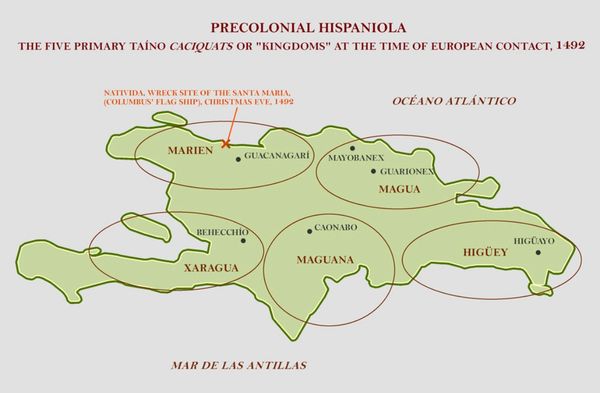Signed in as:
filler@godaddy.com
Signed in as:
filler@godaddy.com
Relations between the two sides of Ayiti (Haiti) have been tumultuous since the island was colonized by separate European colonizers. Prior to revolting for its independence in 1804, Ayiti (Haiti) was the French colony of Saint-Domingue. Under French rule, Saint-Domingue grew to be the wealthiest colony in the French empire and, perhaps, the richest colony in the world. The Haitian Revolution was the first successful insurrection by self-liberated enslaved Africans and their decendants. The revolt began on August 22nd 1791, and ended in 1804. European colonizers created white supremacy ideals of racism and colorism. Today we know... Everyone continues to benefit from the continued suffering of people from African decent.

The entire island was called Ayiti (Haiti) by the Taino people. The five main areas of Ayiti were organized by the five main Caciques. The eastern side of the Island was colonized by the Spanish in 1492. The French colonized the western side of the island in the 1650's. After the Taino people were enslaved, raped and decimated; Europeans began enslaving Africans to take their place. Anti-African ideology and hate was born on my island.

For Women's History Month I wanted to showcase one of my favorite books and authors, Black Behind the Ears By Ginetta E. B Candelario.
In this book she outlines the historical and ethnographic formation of the Dominican identity in the Dominican Republic and the United States. For much of the Dominican Republic’s history, the national body has been defined as “not black,” even as black ancestry has been grudgingly acknowledged. Rejecting simplistic explanations, Ginetta E. B. Candelario suggests that it is not a desire for whiteness that guides Dominican identity discourses and displays. Instead, it is an ideal norm of what it means to be both indigenous to the Republic (indigenous) and “Hispanic.” Both indigeneity and Hispanicity have operated as vehicles for asserting Dominican sovereignty in the context of the historically triangulated dynamics of Spanish colonialism, Haitian unification efforts, and U.S. imperialism. Candelario shows how the legacy of that history is manifest in contemporary Dominican identity discourses and displays, whether in the national history, the national museum’s exhibits, or ideas about women’s beauty.

This month I kinda turned 43! Being born on February 29th gives me a constant youthful spirit. This picture was taken at my parents wedding when I was 2 years old. They had to get married in order for us to be sponsored by my dad and come as a family to U.S.A. It was such a culture shock to go from Paradise to the 1983 Winter Storm of the Season in New York City. If I could I would tell this little baby girl that her Black skin is beautiful and makes her special. I would never let her feel otherwise.

I'm so grateful that March is such a busy month
We use cookies to analyze website traffic and optimize your website experience. By accepting our use of cookies, your data will be aggregated with all other user data.